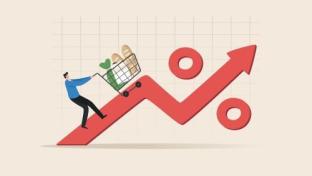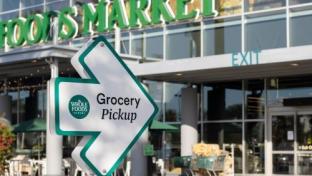Vending Machines: The Solution to Impulse Slowdowns at Checkout
In recent times, there has been a noticeable shift in consumer behavior at the grocery store, characterized by fewer trips during the week as well as a heightened focus on purchasing only the most essential items. This evolving trend has been attributed to a variety of factors, including inflation and the lingering impacts of the COVID-19 pandemic, according to a report from CNN.
One notable area where the impact of this behavioral shift is being keenly felt by grocery stores is the impulse aisle. Traditionally, this section has been a hotspot for last-minute purchases, encompassing a wide range of products such as gum, candy, beverages, batteries and other high-profit miscellaneous items that shoppers have historically grabbed on a whim. However, as consumers become more deliberate in their grocery shopping, the revenue generated from these softer impulse buys has dwindled.
The decline in impulse purchases could potentially spell trouble for grocery retailers, as these spontaneous buys have historically contributed significantly to their bottom line. Marshal Cohen, chief retail industry advisor for NPD, commented on this change via a news release from his company, saying that “consumers aren’t just buying less stuff, they are shopping less, which means a loss of the impulse-shopping moments that are critical to retail growth.”
However, even though this may seem like bad news, the grocery industry has shown remarkable adaptability by finding innovative ways to leverage this change in consumer behavior and turn it into a positive opportunity.
One prominent adaptation that has emerged is the increased deployment of vending machines in and around grocery stores. According to a report from Forbes, the demand for vending machines in public spaces has experienced a remarkable upswing following the COVID-19 pandemic. This trend aligns with the changing dynamics of consumer behavior as shoppers seek more convenient and efficient ways to access essential and last-minute items, and are also looking for a touch-free, instant option to get the items they need.
While some might think having a vending machine in a grocery store might offer the same disappointing results as the impulse aisle with similar items, the modern vending industry has evolved far beyond just snacks and grab-and-go drinks.
Niche vending machines have sprung up in vast quantities around the United States, stocking more essential items, including over-the-counter medicine, ice bags, water jugs and even Band-Aids. These vending machines offer a smart alternative to the impulse aisle, giving customers a way to purchase something that is not necessarily planned, but is something they nonetheless view as essential in a convenient way.
For instance, if a customer comes into a grocery store picking up items for a picnic, they might not immediately think about filling their cooler up with ice at the grocery store at the same time. However, with a well-placed machine near the entrance or exit of the store, the customer might impulsively decide to grab a few bags of ice while they are at the store anyway, saving themselves time later.
The advantages of vending machines extend beyond their ability to meet the demands of time-pressed consumers. They also offer grocery stores an efficient and cost-effective means of expanding their reach and increasing sales. By strategically placing vending machines in high-traffic areas, grocery stores can tap into a constant stream of potential customers, providing them with an array of options to meet their immediate needs.
In addition to serving an already established customer base, adding a vending machine to the outside of a grocery store can increase traffic. While vending machines might not seem like a natural customer-acquisition tool – at least not at first – a well-lit and clearly branded vending machine can draw fresh eyes and traffic, with customers who want to use the vending machine potentially also stopping in to make purchases at the same time. For instance, if a customer is looking for fresh water from a vending machine that they’ll be using on an upcoming camping trip, they might stop by to use the water machine, and then impulsively enter the store to pick up some snacks as well.
The shifting landscape of consumer behavior at the grocery store reflects a multifaceted response to economic challenges, inflation and the enduring effects of the COVID-19 pandemic. While the decline in impulse aisle shopping may present challenges for grocery retailers, it has also spurred innovative solutions such as the increased use of vending machines, which not only can help boost profits by offering customers a new way to purchase essential items, but also attract new customers as well.
Vending machines are well positioned to meet the evolving needs of consumers for convenience, speed and variety in their food and beverage choices, and can also help grocery stores keep revenue high, even as sales from certain sectors stumble.



